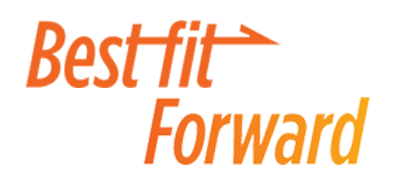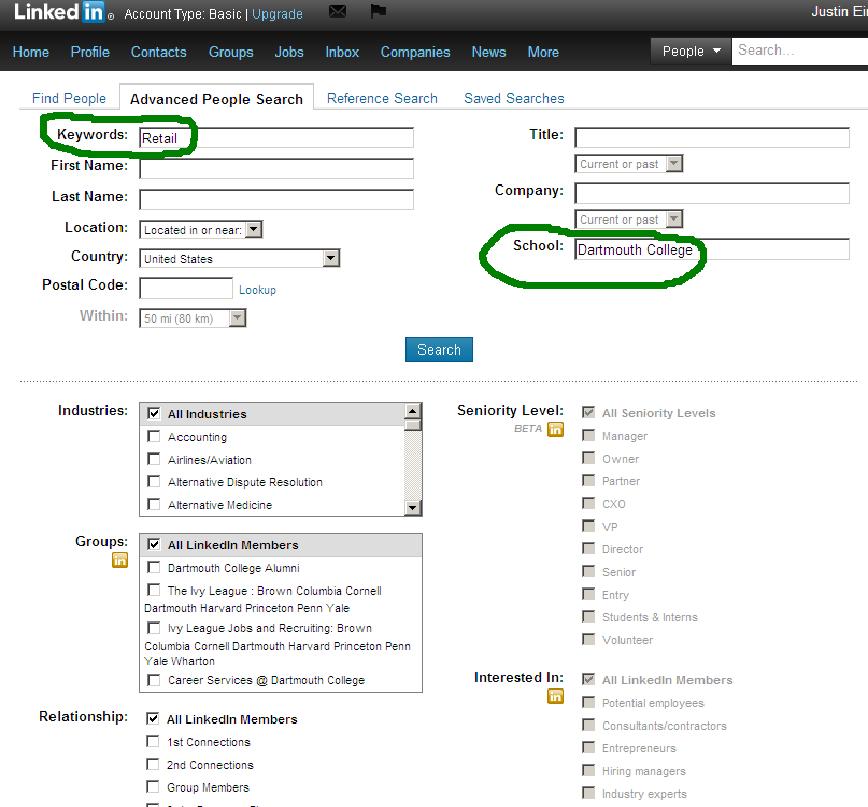As an intern for the Center for Professional Development (formerly Career Services when I worked there), I discovered the power of LinkedIn in helping to brainstorm my career progression and the skills needed for the careers I desire. Here are the 3 simple steps that I followed using LinkedIn to network, discover opportunities, and plan out my career: 1. Research before you write or connect.
Increase the relevancy of your search by making use of the advanced search tool (pictured above). Try using specific keywords that might highlight the people who share your interests. Always look for those who are members of the Dartmouth College Alumni Group, as they specifically chose to be a member and would likely be the most receptive to your inquiries. Be sure to also reference the Dartmouth Career Network, which contains over 23,000 alumni who have each volunteered to help. Check out our suggestions on how to best contact and start a conversation with alumni here.
Need help optimizing your professional presence? Don’t forget to sign up for the LinkedIn workshops to get a better idea of how you can use LinkedIn to better tell your story. The workshops highlight the differences between LinkedIn and traditional media and will empower you to both assess and showcase your skills and interests using LinkedIn's tools. We'll teach you how to best structure your profile and how you can then use it to network and have conversations with either alumni or potential employers that go beyond the basics.
2. Investigate career paths of others with your interests.
One of LinkedIn’s most powerful uses—and probably its most basic one—is to simply gauge how others have both built upon and progressed in their experiences. Using the methods of research discussed above, locate potential new connections who share your interests and check out the track of their professional career path. This information will not only allow you to detect a shared interest between yourself and this person for a potential conversation starter but will also allow you to make more informed decisions about the companies to which you will apply.
3.Spot trends in these paths.
Let LinkedIn be an additional career consultant. When looking at the trajectory of someone’s career, be sure to make note of how his or her career has grown and notice any trends within the career path of this person you chose on the basis of mutual interest. In tracking his/her career progression, notice how he/she was able to use the skills he/she developed from one position in order to progress into another position. With this information, you will get a better idea of what types of skills will enable you to move toward your desired role.
How can I tell you this? I used this exact framework when I got the chicken pox during one of my off-terms. I used LinkedIn as a resource to find and reach out to people for informational interviews.
I then sent applications for approximately 20 listings I found both on DartBoard and other websites. I had many interviews, some rejections, and ultimately selected the internship that was right for me.

